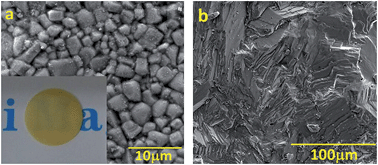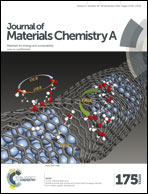High energy density in silver niobate ceramics†
Abstract
Solid-state dielectric energy storage is the most attractive and feasible way to store and release high power energy compared to chemical batteries and electrochemical super-capacitors. However, the low energy density (ca. 1 J cm−3) of commercial dielectric capacitors has limited their development. Dielectric materials showing field induced reversible phase transitions have great potential to break the energy storage density bottleneck. In this work, dense AgNbO3 ceramic samples were prepared successfully using solid state methods. Ferroelectric measurements at different temperatures reveal evidence of two kinds of polar regions. One of these is stable up to 70 °C, while the other remains stable up to 170 °C. The associated transition temperatures are supported by second harmonic generation measurements on poled samples and are correlated with the occurrence of two sharp dielectric responses. The average unit cell volume is seen to increase with increasing DC field and has been interpreted in terms of increasing levels of structural disorder in the system. At a high electric field the structure becomes ferroelectric with high polarization. This field induced transition exhibits a recoverable energy density of 2.1 J cm−3, which represents one of the highest known values for lead-free bulk ceramics.



 Please wait while we load your content...
Please wait while we load your content...